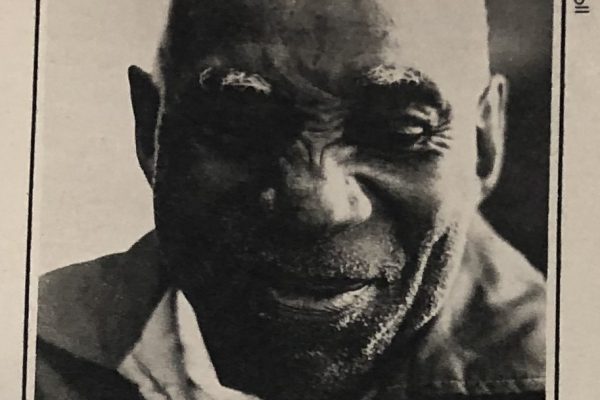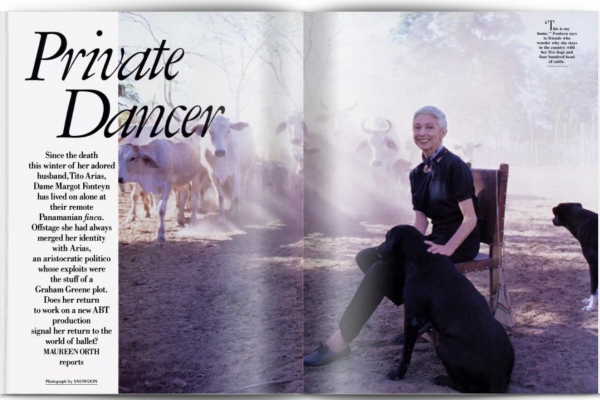Original Publication: New York Woman – February 1, 1988
By dull and dismal February, fur lust or disgust is at its zenith. High-heeled herds of Blackglama have been stampeding the town for months now. For all of you who have never bothered to wonder whether furs or diamonds are a girl’s best friend, let me assure you that furs are a very touchy subject. According to New Yorkers who notice, your fur is definitely talking about you. It’s also a defining detail. For example, black mink: a successful businesswoman bought it for herself. Dyed orange mink: your mother-in-law gave it to you. White fur: you’re either royalty or a hooker. Sable: you are very spoiled or very lucky. The jury’s still out on silver fox.
“When I see a woman in a fur coat,” said the first observant man with whom I broached the subject, “I first think she has money, then that she has a high regard for herself, and finally I want to know what’s underneath the fur.”
“What do you mean, ‘what’s underneath’?” I asked.
“Like if there’s nothing underneath.”
“Oh.”
“Furs are only about money,” scoffs fashionable furless woman-about-town Andréa Portago. “I want to know what planet these people come from who wears them. If a man comes to pick me up, I certainly don’t need one to wear from my front door to the inside of a limousine” Tom Brokaw seconds that emotion: “Furs are the quintessential symbol of decadence. I hate them.”
It’s a given that wearing furs is revolting or, at the very least, disappointing to some. And not just to the animal-right-to-lifers who hate the idea of your wearing soft little creatures on your back. There are also those who are bothered by the whole notion that you’re nobody till somebody loves you enough (or you love yourself enough) to drape you in furs. And then if you do go out and splurge on that coveted fur, beware the mini-mink depression when you get it home and you’re not transformed into the Fairy Princess.
But most women think a fur’s better than a face-lift. “It’s instant glamour,” says CNN’s fashion maven, Elsa Klensch. “You feel like a million. Something about fur is magic.” U.S. fur sales have more than tripled in the last decade ($1.8 billion last year, up from $504 million ten years ago.) Sixty percent of the market is mink, nearly all ranch grown. (In fact, the American Fur Industry assures us that over 90 percent of all U.S.-made furs come from ranch-bred animals, including fox.) Once the province of privilege, furs for many successful career women have become what Cadillacs in the Fifties were for men: symbols of achievement.
Today the average customer is no longer fifty; she’s somewhere between twenty-five and thirty-six. And as the classiness factor fades with every Fred the Furrier commercial, the demographics spread. FAO Schwarz now offers a mini mink coat for toddlers, for $2,500. Furs are on the bus. Furs are on the subway. Furs are at Chock Full O’Nuts. Yet no matter where they are, those little warm pelts immediately inspire gossip and fantasy about the woman who wears them. Everyone loves to make these assumptions.
“She’s either a kept woman or very classy,” says Bob Tierney, public affairs director of AT&T. “The snap-judgement factor is much faster,” says Capital Vectors Incorporated president Lou Day of a gorgeous woman in a fur coat versus the same woman in a cloth coat. “Mink makes its own statement, and beautiful women make their own statement. Putting the two together is easier. The fur says money, status and that she’d be a great mistress. It all goes back to the bearskin rug.” Day continues: “All I need is a fireplace and a fur, and it works for me.” Forget about black stockings,” says a senior partner at a major New York City law firm who has given fox, coyote and mink coats in his time. “A fur and a camisole are the only purely sexually oriented garments there are.”
“It’s like petting a cat,” purrs designer Giorgio di Sant’ Angelo, who only designs “untortured furs” raised on a ranch, “like chickens and cows.” He warns “Don’t call furs sexy. Sexy is old. It means Cosmo cleavage. Furs are sensual.” Apparently Adnan Khashogghi thought so. Three years ago the former “world’s richest man” toddled into Antonovich’s showrooms and picked up thirty fox jackets as Christmas presents. While he was at it he also ordered a triple-king-size sable bedspread for himself ($300,000) and a white mink spread for his fiancée ($50,000) for her (adjoining) bedroom. Daniel Antonovich says, “I heard from the butler that they invited each other into their rooms. Kind of kept the romance going that way.”
Antonovich sells about six thousand minks a year. David Antonovich, Daniel’s brother, says it’s about fifty-fifty whether a man will buy the better fur for his wife or his girlfriend. What is clear is that some men really have a very fuzzy view of things.
“There are two categories of fur,” the senior law partner explains, “long-hair and short-hair. Apart from raccoon, which to me is a college thing, like camel hair coat, wearing a long-hair fur is much more aggressive. The woman is really making the statement she wants to be looked at and seen.”
“She’s making the statement she’s married,” according to thirty-one-year-old Peter Mehlman, a writer. “Fur is better than a wedding ring and easier to spot.” For Mehlman, a woman in a fur is also advertising her age. “Thirty-two and up,” he says.
Younger men especially are quick to point out that donning any sort of endangered species is a total turnoff, and some sophisticated men see all fur on women as immoral. Edward Koren, the clever New Yorkercartoonist who draws those funny long-snooted furry people for a living, does not find fur worn by women the least bit amusing: “How absurd it is to spend an incredible fortune on skins to compliment what is probably ridiculous skin on the fur bearer. I’m not an animal-rights person, but to sacrifice a living creature for the vanity of wealthy folk is a moral issue. I have nothing but scorn for people who wear these things. If you want warmth, wear Thinsulate.”
I have to admit I was taken aback. Sexual fantasies and scorn? Why do men talk this way about women in furs? Naturally Dr. Joyce Brothers had an answer, and naturally it all springs from somewhere way down deep in the unconscious. “You know the biggest sex organ is the brain,” instructs Dr. Brothers. “And almost every little boy had that comfortable feeling of being held against warm fur by his mommy [little boys on Park Avenue, that is]. Fur brings back that lovely feeling of Mama, of being hugged and kissed. That wonderful, sexy feeling of Big Mama is taboo in the unconscious. [Tell it, Dr. Joyce.] So now they are free to project those feelings on a strange woman because she’s not Mama.”
So what about those denunciations of vanity? Forget it, says Dr. Brothers. They’re not only skin deep. “Vanity has not entered man’s unconscious. That’s his conscious talking.”
Apparently it’s getting through to a lot of women, causing them to slink in their minks for nonsensual reasons. An executive recruiter, for example, thinks wearing her mink to the office is “unprofessional.” Her creative solution: buying a beaver coat as a second. Another woman will only wear her mink on the East Side. For Columbus Avenue she throws on an old raccoon. Magazine editor Judith Coyne once bought an ancient seal coat in a Columbus Avenue thrift shop after being brazened by the cigar-chomping proprietor, who said, “Honey, these seals were dead before you were born. But when people started asking, “What kind of fur is that?” she’d say, “Veal,” to deflect the grilling.
“There’s no sense owning one if you’re not comfortable wearing it,” says Nancy Ann Norton, a spokeswoman for the American Fur Industry. “The fur industry wants you to feel comfortable and proud to wear it.”
Norton, you have to meet Jill Cassidy. “Every woman should have a mink coat in her life,” says the willowy ex-model who owns five furs. “If a woman has a mink coat hanging in her closet, she can walk around in a cloth coat and feel secure because a mink does mean something.” Cassidy just purchased a dramatic full-length Mongolian lamb coat for a month’s stay in Florence. “The Snow Queen has arrived. I wanted to make that statement. Yet Cassidy is, as most woman are, ultimately pragmatic about her taste for luxury. “A fur is like a car or a yacht. As soon as you take it out of the showroom, it’s worth half. You don’t buy a fur for investment.”
Nope, you buy it for impact. Best-selling author Nancy Friday still has the purple-dyed Zandra Rhodes fox she purchased in the early Seventies and still wears the ten-year-old champagne fox with matching boa she took on her book tour in England for My Mother/My Self. “The coat got reviewed more than the book. ‘In comes Madame Friday in her swashbuckling coat.’ What was I supposed to do, drape it over my arm?”
“Never!” say women who love the lift and the status a fur gives them and who don’t really care much whether men are fantasizing or talking about them in their skins or not. It’s what they feel the furs do for them.Absolutely, Dr. Brothers is more than happy to explain. “Women do not dress to seduce or please men. Women are dressing for their own unconscious image of themselves.”
Still, I’m left with: kept, married, arrogant, sensual, spoiled, classy, vain, successful, aggressive, decadent. My, how those dead little pelts on your back speak volumes about you.
This article is typed from the original material. Please excuse any errors that have escaped final proofreading.



